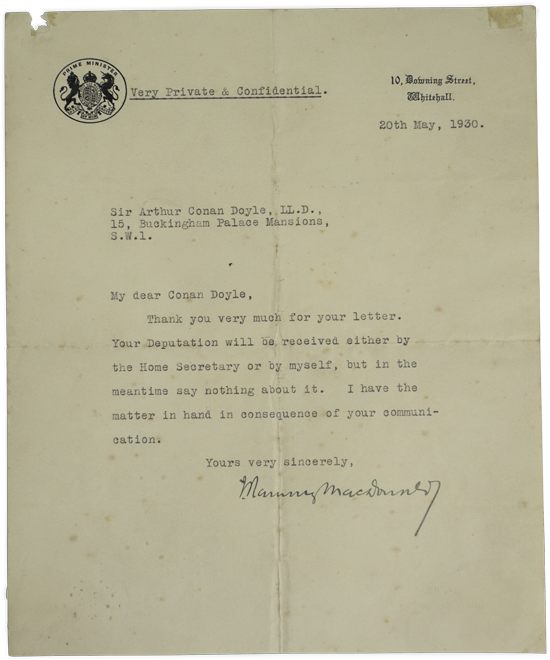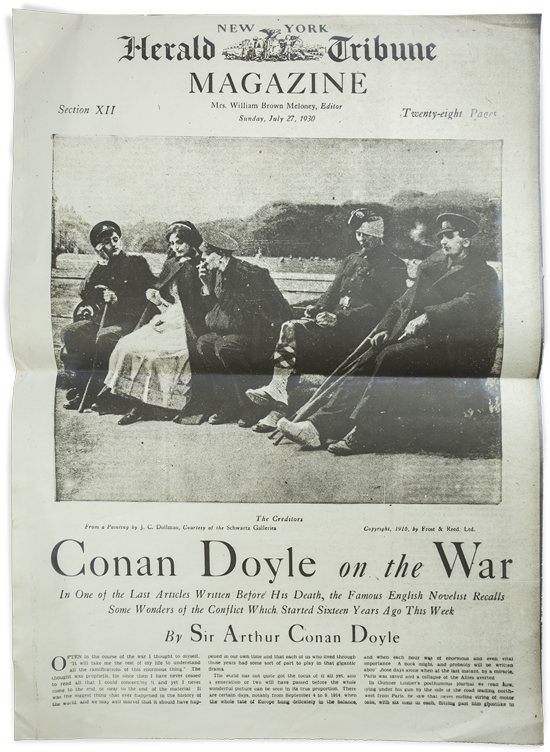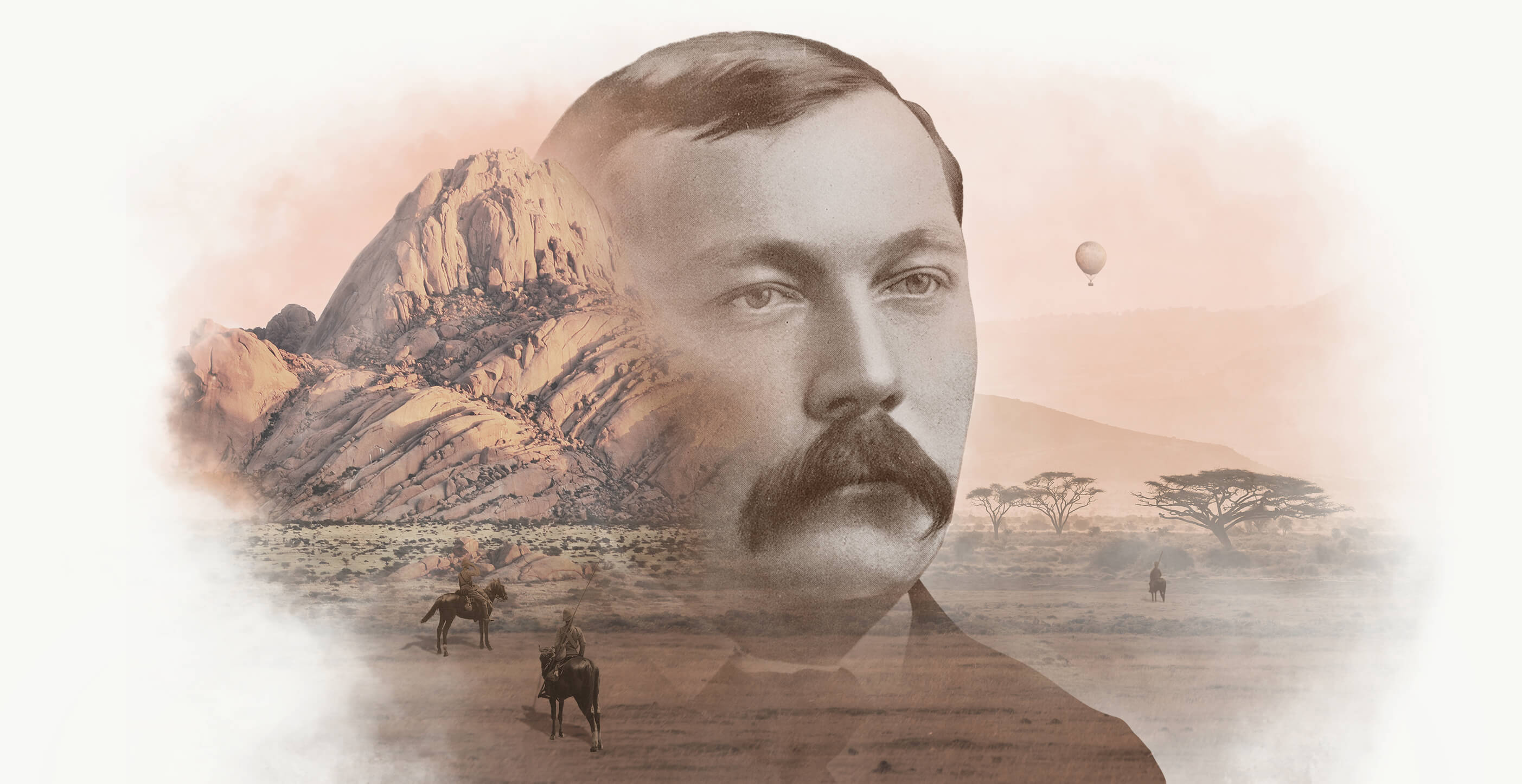“HE REPRESENTED ACTION AND LETTERS WITH EQUAL SPIRIT AND HIGH-MINDEDNESS”
Israel Zangwill, President of the International Jewish AssociationThrough press interviews with the remarkable detective’s creator, the success of Sherlock Holmes made Conan Doyle a public figure in the 1890s, along with stories about medical practice’s social and ethical issues, and his national epic The White Company that had appeared in 1891. That year he joined Walter Besant’s rising Society of Authors, promoting authors’ interests in a heated era of expanding periodical publishing.
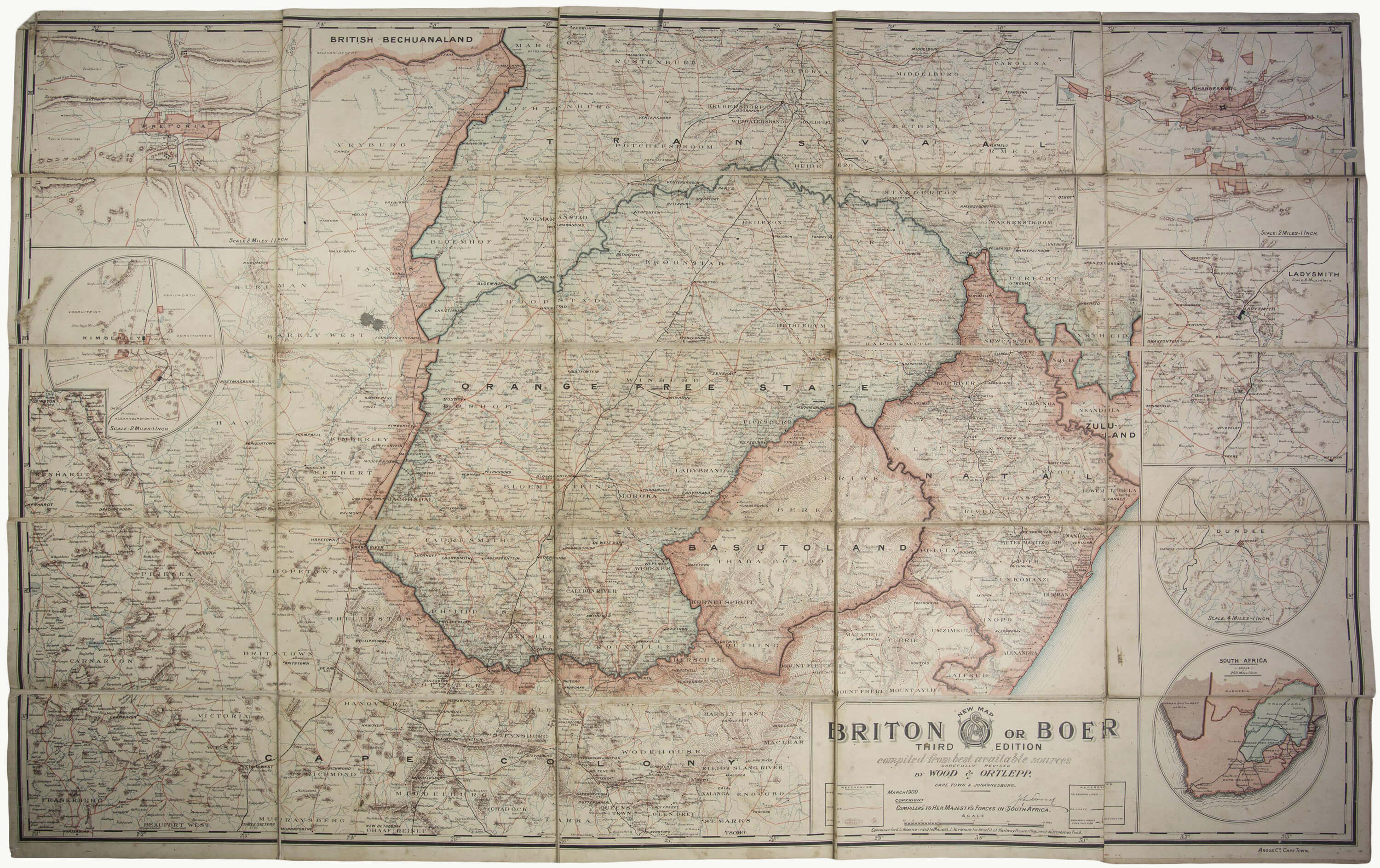
1899
The Boer War 1899 - 1902The Boer War crystalized his thinking about public issues, and role as a public man. He wrote a stirring defense (for consumption abroad in particular) of the British cause in that conflict, which led to a knighthood for him. He became a prominent advocate of military reforms to overcome shortcomings and obsolete practices that the Boer War had exposed, and he began to call the public’s attention to Germany’s dangerous ambitions as a Great Power.
Bethulie Bridge in South Africa, c.1900
Blown up by the Boers on 10th March 1900
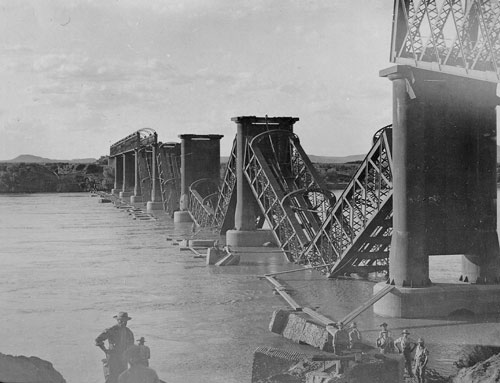
Conan Doyle in the field in South Africa, c.1900
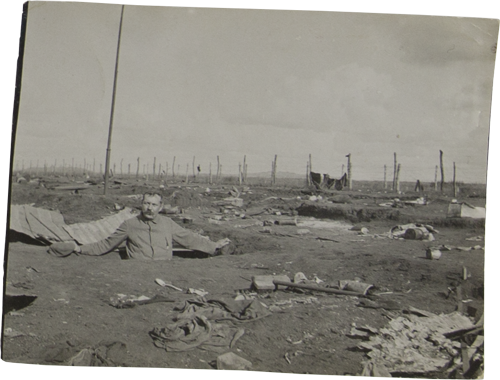
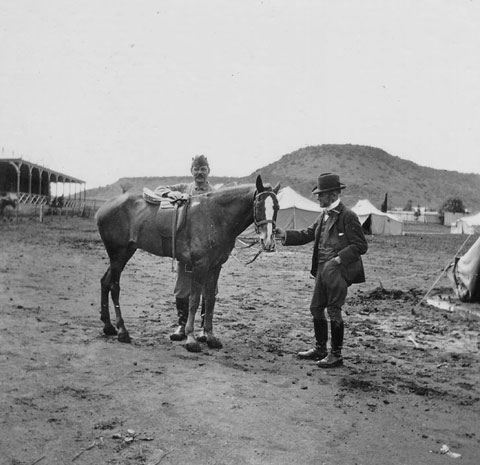
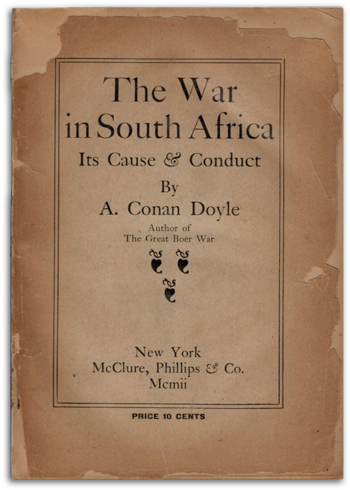
Dr A. Conan Doyle in Bloemfontein, c.1900
Volunteering as a medical doctor, he sailed to Africa in February 1900. Pictured here in his tent.
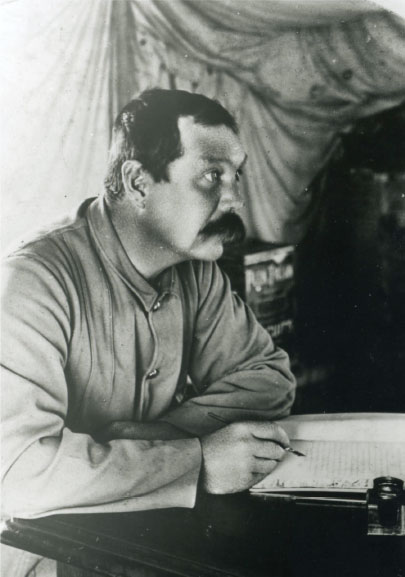
Conan Doyle in his Deputy Lieutenant uniform
c.1902
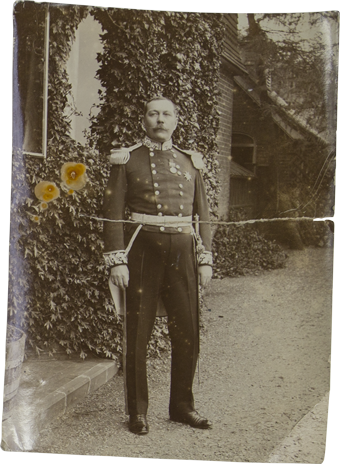
1907
A man on a missionHe also took on miscarriages of justice, beginning with solicitor George Edalji’s unjust conviction for horse and cattle-maiming, and leading to the establishment of Britain’s Court of Criminal Appeal in 1907. Looking abroad, he helped call attention to Belgian atrocities in the Congo, publishing The Crime of the Congo in 1909 in what became an international cause.
Can Jon help to date and comment on these please?
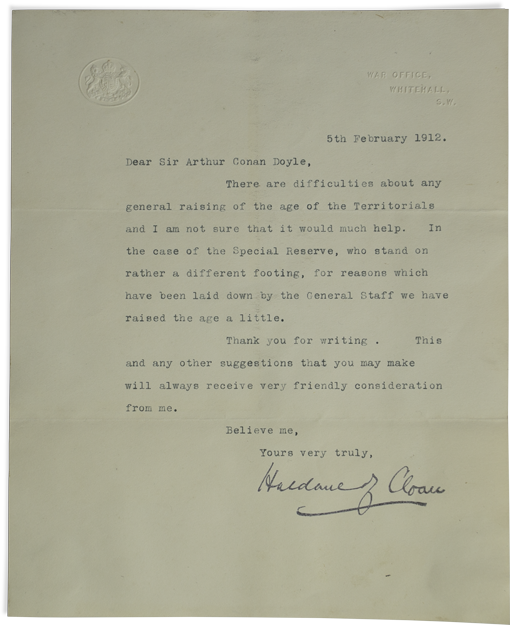
Can Jon help to date and comment on these please?
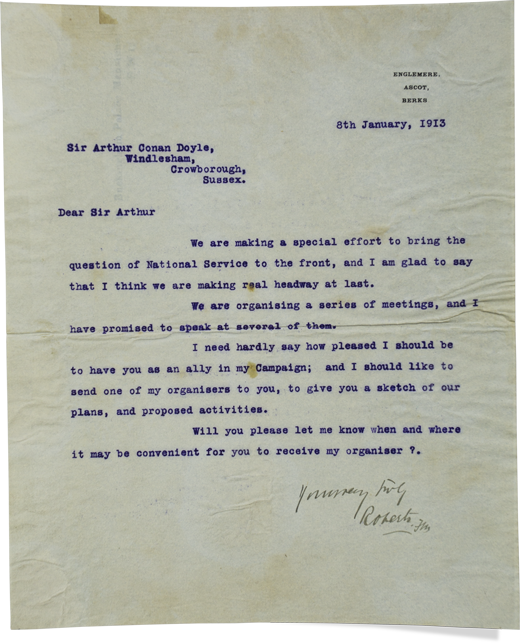
Can Jon help to date and comment on these please?
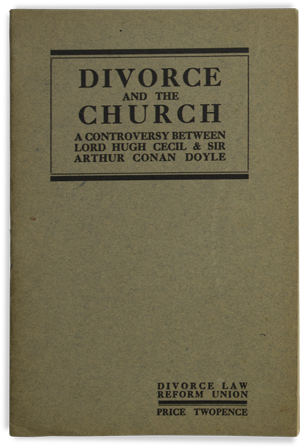
Can Jon help to date and comment on these please?
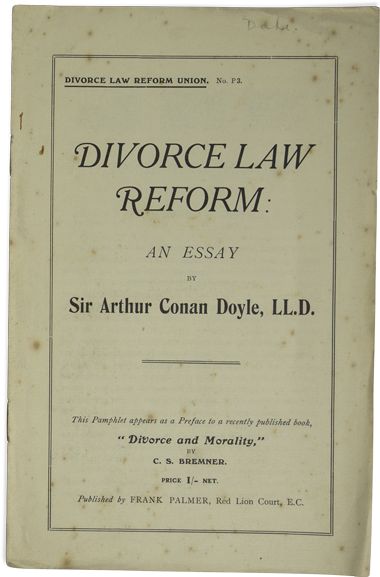
Can Jon help to date and comment on these please?
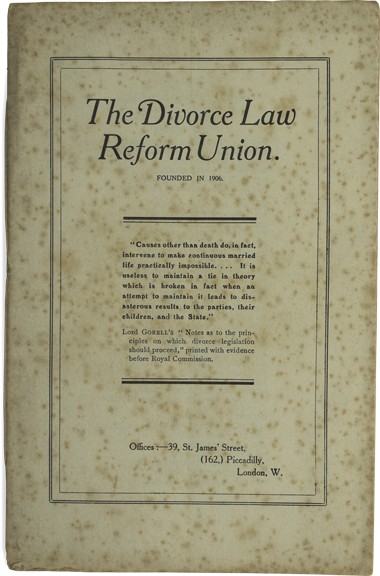
1914
The outbreak of World War IWhen World War I broke out in 1914, Conan Doyle at once wrote a national appeal, To Arms!, and was brought onto His Majesty’s Government’s secret War Propaganda Board, called by one historian the greatest assembly in one room ever of literary power.
65,250 British soldiers were killed and wounded during the second battle of Ypres in 1915. Appalled by the casualties, Conan Doyle wrote to The Times (27 July). He proposed that helmets and armour would reduce the number of wounds caused by shrapnel, rifle and machine gun fire. He also suggested that large shields could give groups of soldiers complete protection from enemy fire. Further information about Conan Doyle’s efforts with regards body armour can be found at the Royal Armouries in Leeds.
By 1916 those casualties — which by the war’s end included six members of his family, including his brother and his oldest son — reinforced the interest he’d taken in psychic phenomena since the early 1880s.
Can Jon help to date and comment on these please?
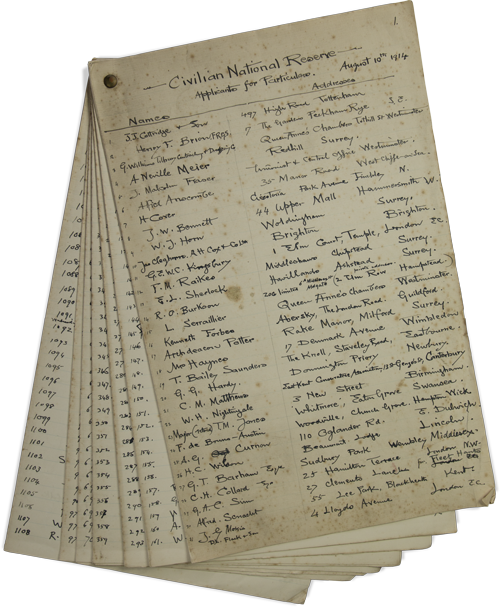
Can Jon help to date and comment on these please?
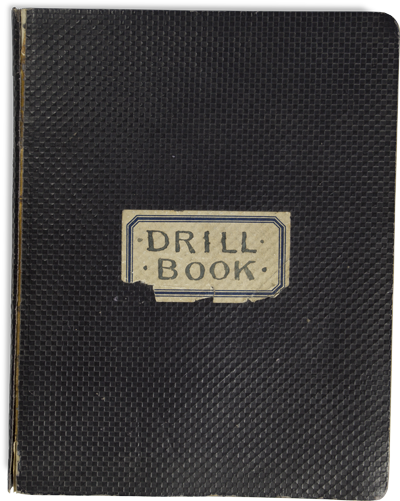
Can Jon help to date and comment on these please?
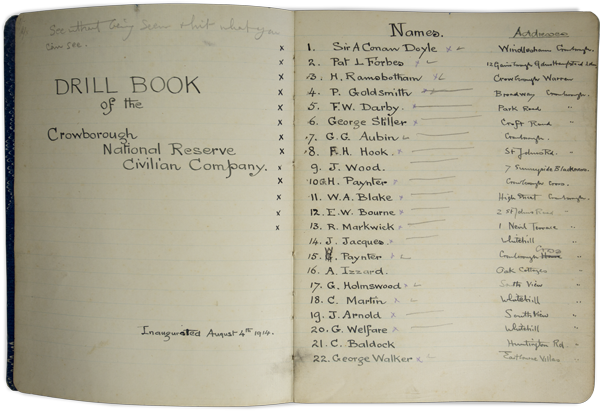
Can Jon help to date and comment on these please?
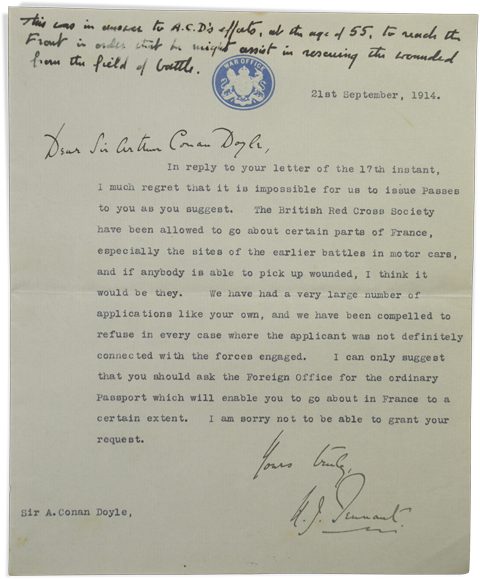
A letter from the South African Batallion, 1914
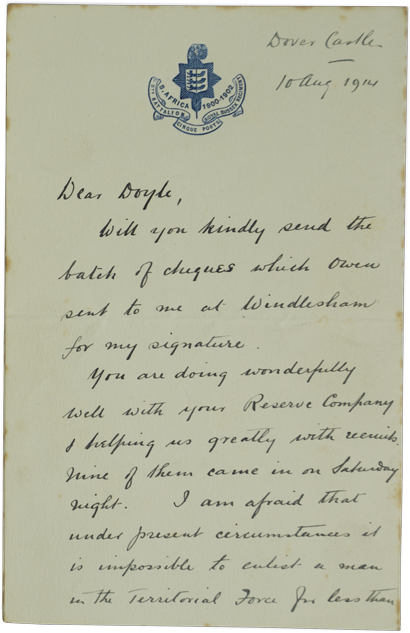
Can Jon help to date and comment on these please?
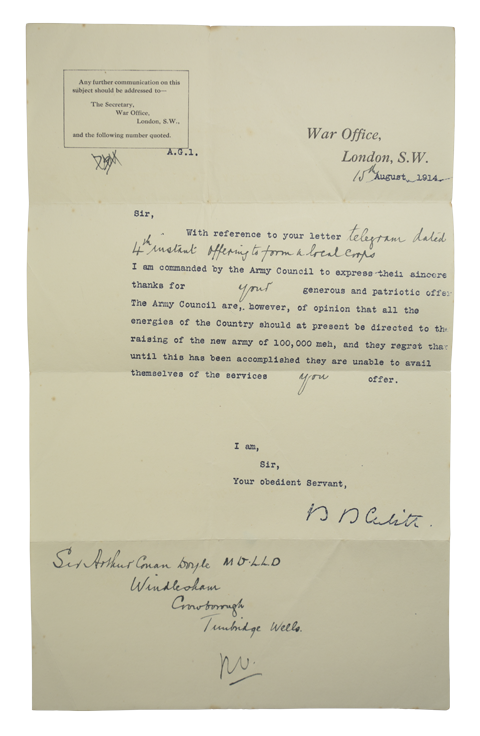
Can Jon help to date and comment on these please?
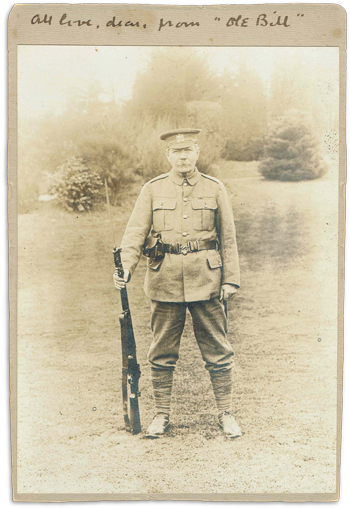
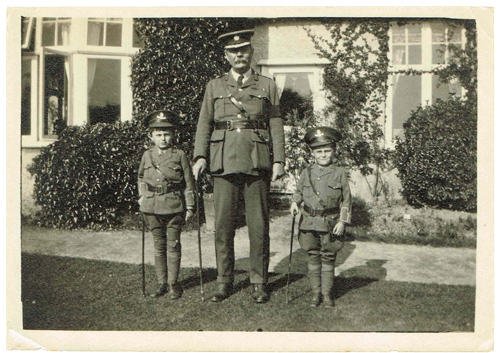
Can Jon help to date and comment on these please?
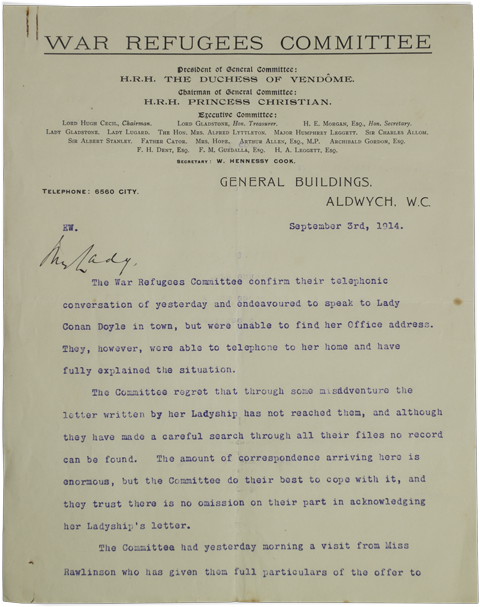
Can Jon help to date and comment on these please?
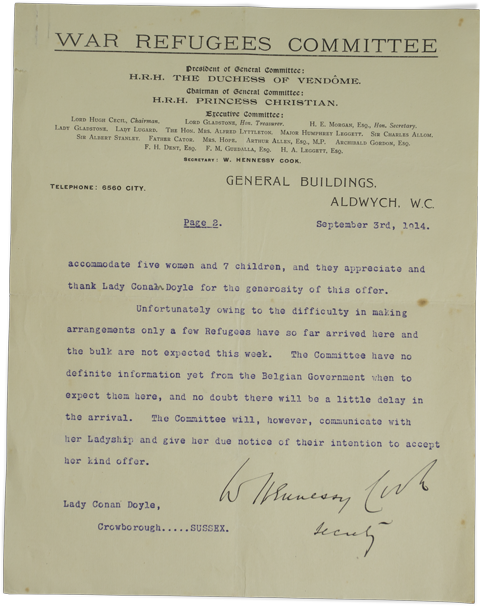
Taking inspiration
Conan Doyle recalled the story of Ned Kelly, the Australian Bushranger, who had used homemade armour to resist arrest in 1880.
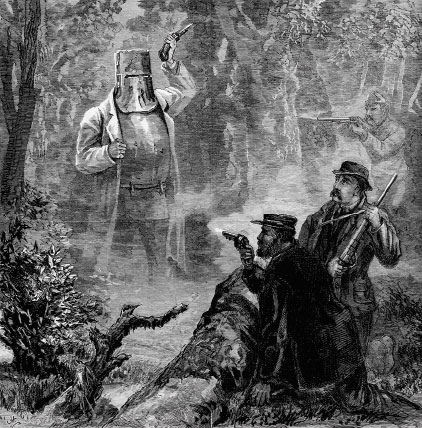
1918
A different outlook on lifeAfter the war Conan Doyle resumed writing fiction, including more Sherlock Holmes, but this now became a means to a new end: financing a Spiritualist crusade that became his final great public campaign — in not only Britain, but also in America and Canada, Europe, parts of Africa, and the Antipodes, until his death in 1930.
Can Jon help to date and comment on these please?
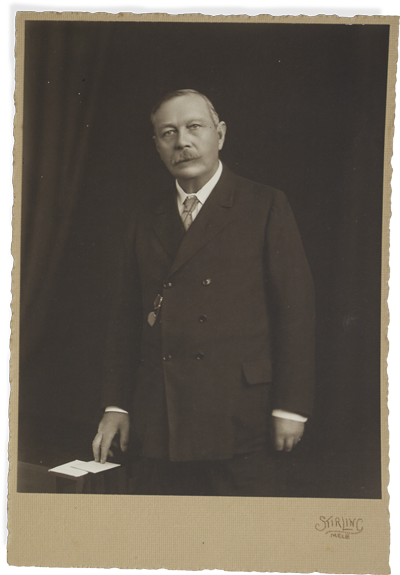
Can Jon help to date and comment on these please?
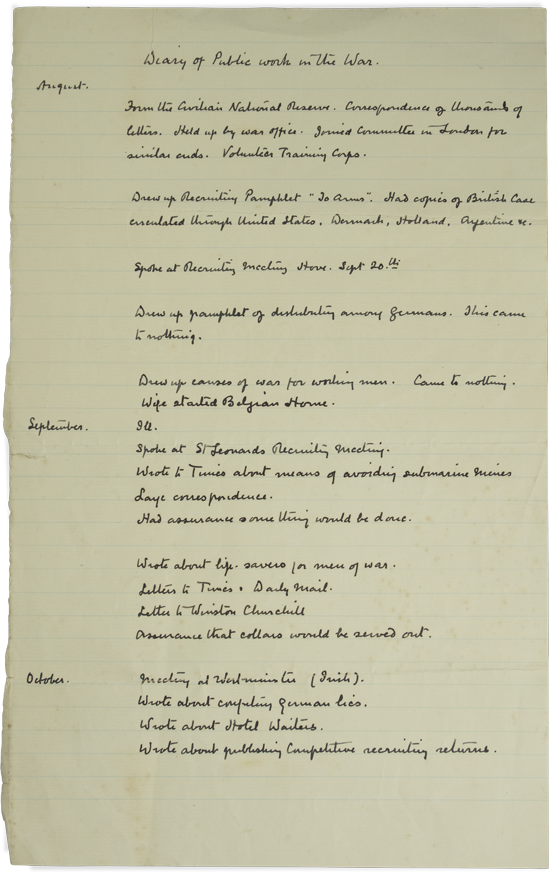
Can Jon help to date and comment on these please?
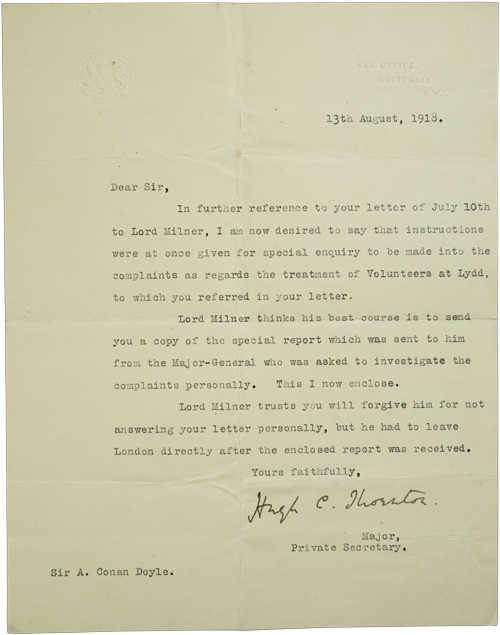
1930
The mystery letter to the PM of Great BritainDaniel Stashower, author of the award-winning Teller of Tales: The Life of Sir Arthur Conan Doyle: "On July 1, he went to the battlements for the last time. For some months he had been lobbying against an ancient piece of legislation called the Witchcraft Act, dating to the reign of James I, which had been revived as a means of prosecuting mediums. A steady flow of letters brought about a meeting with the Home Secretary, Mr. J. R. Clynes. Jean accompanied him to the Home Office and watched anxiously, clutching a vial of smelling salts, as her husband rose unsteadily to plead his case. Mr. Clynes appeared more concerned with his visitor’s health than with the merits of his argument. “Pray sit down, Sir Arthur,” he said, offering a glass of water. His voice faltering, Conan Doyle went ahead with his prepared statement, drumming his fingers against his chest as though to keep his heart beating."
The Mystery letter
A matter for 10 Downing Street
